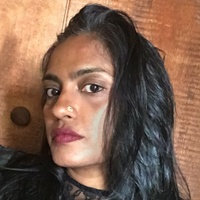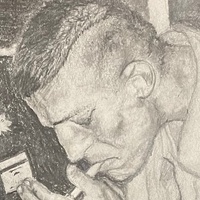On why nothing exists without collaboration
Prelude
Tony Patrick is a world builder, immersive director, and founder of the Tenfold Gaming Initiative and the (Re)Writers Room. Patrick creates fictional and immersive worlds and sculpts co-creation spaces which produce new artworks, prototypes, frameworks, and civic solutions. Patrick is the co-author of Batman and the Signal, a collaborator of Hereborn Park, a member of the Guild of Future Architects, and a Sundance Institute World-building Fellow.
Conversation
On why nothing exists without collaboration
Worldbuilder Tony Patrick discusses the power of imagination, building online space for Black joy, and moving at the speed of trust.
As told to Daniel Sharp, 3486 words.
Tags: Writing, Technology, Games, Architecture, Research, Art, Collaboration, Identity, Inspiration, Mentorship.
In your bio, you not only call yourself a creator and re-writer, but you also call yourself a world builder. What does a world builder mean to you?
I’ve been thinking about this lately. I usually define world building as creating a speculative future that catalyzes a real world, modern day result. World building is usually first associated with literary and gaming realms in terms of creating a fictional universe. But over the years, I’ve had the pleasure and privilege to see various communities sit around the table and catalyze a vision which can be implemented and materialized in the present. I’m starting to think that we’re all, to some degree, world builders.
So if everyone is a world builder, do some people just decide not to act on the impulse to create or build something?
Absolutely. I don’t think there’s anything wrong with it, but there are some people who are not very comfortable with building. They’re not very comfortable with embracing certain processes, whether that is designing, building, implementation, and so on.
But humans are inherently good at play. We see this all the time in children. It’s the power of imagination. That innate ability and that inherent power is in there, always—it’s somehow inherent to humanity, but we aren’t really cultivating it. A lot of people don’t have the privilege and the time to continue to cultivate it.
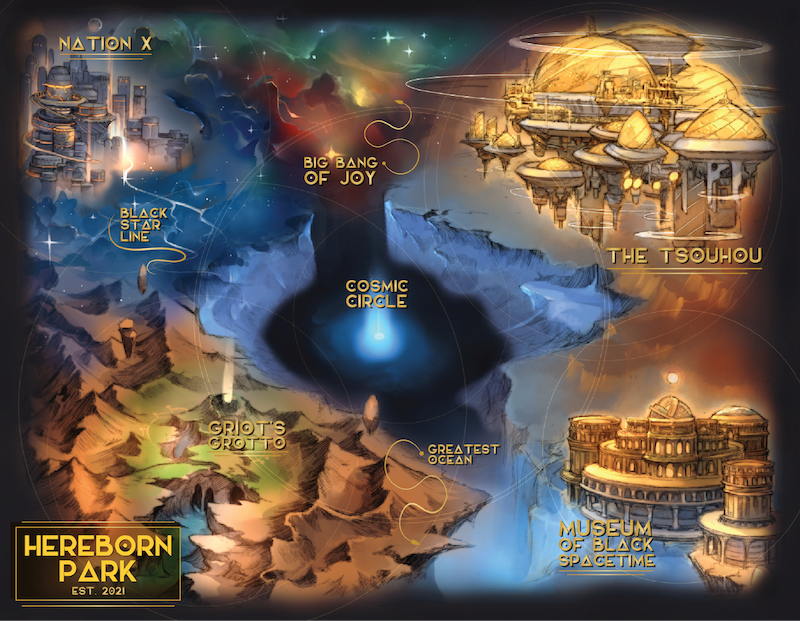
Hereborn Park Final Map by Tony Patrick and Aaron Tucker
What about people who build a world that isn’t good for others?
Well, what you’re talking about is what I call a lack of cultural abundance. If you don’t have a culturally abundant table for people to create, then you’ll end up with a lot of the blind spots and constraints that arise from a biased or singular viewpoint. The wider the spectrum, the stronger and more resonant the output and expression, as far as I’m concerned.
We want a culturally abundant crew of people to imagine together in order to avoid biased and siloed outcomes. It provides a dimensionality that you would not get with groups made up of the same people. It’s a personal principle that I add to all of my world building sessions. Because otherwise, yeah, one person’s utopia becomes another person’s dystopia.
It sounds like a world builder is an aesthetic approach to the field of systems science. Are there any writers, makers, systems scientists, or other world builders that you definitely point to for inspiration in your own practice?
I was part of the Sundance World Building Residency that was called the Future of Work in 2017. It was held at USC in their World Building Lab, and it was sponsored by the Kauffman Foundation. So the trinity of those three entities allowed me to stay in LA and imagine the future of collaboration with Lauren McCarthy, who’s a creative technologist and performance artist, and Grace Lee, who’s a documentary filmmaker. We had the luxury and opportunity to imagine a future of LA. It was facilitated by Joe Unger and Trisha Williams, who now have their own VR-based metaverse institution, Origami Air. They taught me their process of world building, which is an iteration of Alex McDowell’s world building process. McDowell was responsible for the production design on the 2002 film Minority Report, which I learned was an output of a weekend summit initiated by Steve Spielberg of technologists, MIT students, artists, and futurists to imagine Washington, DC in 2054.
This process of gathering not only yielded an artistic expression, but it also predicted a lot of the speculative technologies that are commonplace today, like hyper personalized targeted ads, gestural glove technology, and autonomous vehicles. I’m still waiting on the precogs (telepaths immersed in water) to show up. It supposedly initiated or catalyzed over a hundred patents since the screening of that film.
There are many worldbuilders, visioneers, and futurists who are creating inspirational works and spheres who are cooking up new experiences, spheres, and futures for us to inhabit, for instance Intelligent Mischief, Ari Melianciano, Karim Ahmad, Paisley Smith, Marina Zurkow, and Sara Rothburg to name a few. I’m perpetually inspired by two visionaries who have shifted my life-trajectory in the past five years — Kamal Sinclair (of Sinclair Futures) and Sharon Chang (Guild of Future Architects). I’m also a big fan of Monica Bielskyte’s and Ian Cheng’s works as well. People have also used these techniques in urban planning. It’s the same thing: the act of sitting around the table to dream up a collective vision and civic solutions.

Hereborn Park Character Design: Kasama
It’s smart to start world building at who and how we bring people together in the first place.
I use the term world building, but really what I’m doing—and we’re doing—is creating continuums. That’s the focus for me. And a continuum, as far as I’m concerned, is an energetic space in which we establish values and create a space for iteration and re-imagination. From there, we’ll cultivate everything that we need for art, for programming, for technology, and solutions.
2020 showed us that we need a re-imagination. We could see broken systems. We could see the flaws and the fractures everywhere. There was a call to action for re-imagination. You could see it. But this idea of futuring can, to some, seem like a constraint or unnecessary, and there’s a sentiment that we should instead focus on the now. But for me, futuring does focus on the now– because in this very moment of the present, this world we live in now is someone’s past vision of the future. This is why we use futuring as a tool to create an expansive future vision in world-building sessions. That can be honed down into more grounded implementable elements in the present.
That leads us to a recent example of your world building called Hereborn Park. You announced it last year with a Kickstarter campaign, and this year you’re working on building the first phase of the park. Can you walk me through what Hereborn Park is and who it’s for?
Hereborn Park is a Black virtual theme park centered around liberation and joy. It’s a space for play, learning, and collaboration for Black artists and geniuses to work together.
The park is for everyone under the Black diaspora and the marginalized, but it also invites those who are committed to Black joy to visit and participate. Hereborn Park embodies a new framework for collaboration that is housed in joy, in experiential learning, and shared experiences.
How did Hereborn Park start?
So an Interactive Telecommunications Program (ITP) graduate student at NYU by the name of Dylan Dawkins centered his thesis on spaces for Black liberation and joy through the lens of theme parks. He was put on my radar by a fellow instructor. I teach at ITP and the Interactive Media Arts program (IMA), so we had a conversation and I immediately resonated with his inquiry. I offered to run three world building sessions with him and a network Black folks across the diaspora and across disciplines.
We dove into the premise of what a modern day Black theme park would look and feel like. We imagined an ecosystem that flourished, filled with all of the nutrients that one needs in life, on a creative, physical, mental, and spiritual level. Our work was synthesized into a document Dylan used for his thesis.
After he presented his thesis, I asked him if I could dive into the idea a bit further. He granted me permission to kind of take the ball and run with it. So I invited more collaborators to imagine a cosmic themed Black theme park, like Stephanie Dinkins, Intelligent Mischief, Hank Willis Thomas, Terence Nance, LaJuné McMillian, Aaron Tucker, and Ayanna Soaries. It became an intergenerational team of artists and forward thinkers who showed up to play. And ultimately that collaborative effort coalesced into a project centered around building an online place for Black liberation and joy.
It sounds like creative placemaking, or how urban policy and planning work on a communal scale.
I am fascinated by participatory planning. What I’m really doing anyway is participatory design. We bring in people early in the process, which yield outcomes and expressions that people end up being really invested in.
I feel like Hereborn Park is one of those examples. I think of creative placemaking as urban acupuncture: creating small interventions to revitalize the macro-sphere, like an entire region or ecosystem. Hereborn Park acts as an intervention for some of those blocks that we might have in terms of virtual experiences and spaces. How can we cultivate a place of safety, experience, and storytelling that helps us catalyze joy in our own personal and collective lives?
How do you plan to invite people? And how do you envision people using Hereborn Park?
So year one is about opening the first ride, Cosmic Circle, and circulating physical and virtual items from the rewards on the campaign and exploring the idea of making social tokens for our creators and everyone who contributed. We want to make sure that there’s always a dialogue, a call and response, from virtual to IRL.
We’ll see a space that will act as the entry to the park, like a virtual lobby, an interactive map, and the Cosmic Circle experience, which is an emotional journey that takes you from pain and struggle into cathartic joy.
Inviting people in seems to be a through line with a lot of your work, whether it’s working with The Wide Awakes or Batman and the Signal. You almost always bring in more people to the decision table. Why do you choose to work with others?
I think we’ve already entered the age of collaboration. Nothing exists without collaboration. adrienne maree brown’s Emergent Strategies blew my mind because she combined community building with self care, speculative exploration, and imagining as a practice. She talks about murmuration, or the ability for birds to fly in sync together. I feel like one of our most self-destructive acts at the moment, as a society, is ignoring the call into a spiritual, creative murmuration. That combined with an egoistic obsession of discarding (and being disconnected from) the wide spectrum of voices in our world, including our connection to the non-human family members of the ecosystem in which we exist, steers us toward this harmful, planet-crushing trajectory.
Everything collaborates in nature. If our cells do not work together, on a cellular level, we’re done. They have to collaborate to live. So to believe that you exist in a silo is just incredibly self-harming. And so over time, I, probably like some other artists, learned that the hard way, and now make sure I take every opportunity to invite others in.
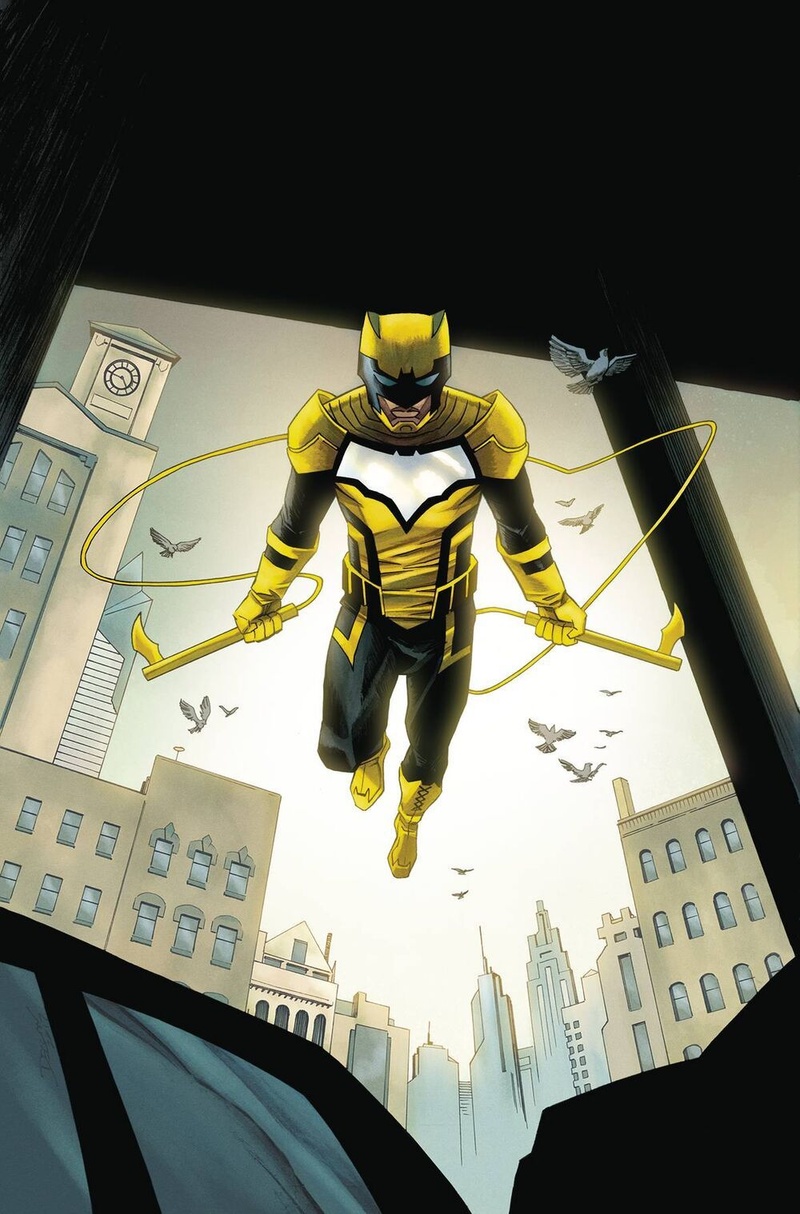
Batman and the Signal, Vol . 1
Just like your principle of cultural abundance.
I know the need and the desire for people to be heard. As a Black man in spaces that haven’t been culturally abundant in the past, I have also witnessed the continual harm of Black people in the United States online and offline. Yet, I’ve become acutely aware over the past few years, how it seems that we have a million ways to talk about and to articulate harm, but not enough words or phrases or sentences which can open the portal for restoration, renewal and healing. Part of what I’m interested in currently is creating space for that. I know how good it feels to be given agency, to be invited into continuums of imagination and creativity.
And as we imagine together, we need to create a shared language for restoration. Where is the verbal bridge for clear, transparent communication that can facilitate healing and repair? Where is the structure for true dialogue and transformation and transcendence? That is part of some of the processes and frameworks I’m interested in. It’s become a passion of mine to cultivate those spaces.
There’s an opportunity to lean into ancestral intelligence, which for me includes Indigenous wisdom and learning from all of those beautiful Black minds which cultivated the continuum in which I now create and stand in. When we explore the whole cultural spectrum of ancestral intelligences, we can take those learnings and start to get to the macro view of us all being part of one ecosystem, a plurality in which we can collaborate with one another to ensure the survival of our species.
Have you ever experienced a community online or offline that just didn’t work? If so, why do you think it didn’t work?
Yes. Communities that don’t work have the tendency to be extractive and ignore regenerative opportunities. First, there’s usually no structure for clear communication, restorative justice, and feedback. Two, they often lack imagination and creativity. And three, they consistently devalue their community members and guests. Those are the things that I’ve seen that usually create a funnel into dysfunction and a quick path to dissolution.
I saw a lot of this in 2020. Most organizations, institutions, spaces, and communities realized they needed to reimagine themselves for a shifting paradigm and culture. That’s why I formed the (Re)Writer’s Room in 2021. After co-founding and working in a futurist-based writers’ room and leaning into the insights from my own experiences and pre-existing practice—I followed the instinct to create spaces which can move past the conceptual and build new frameworks, communities, and networks in the name of reimagination.
How does the (Re)Writer’s Room work?
It starts with creating a culturally abundant space to realign ourselves and reconnect with each other. We then have to rewrite the table and the room we’re sitting in. Only then can we reimagine the cultures, technologies, and organizations we’d like to see in our world in order to flourish.
Right now, we’re focused on the spaces and communities which spun out our first year sessions, like the School of Lived Experience, which was a collaboration with For Freedoms that prototypes an artist-led renewal center. Hereborn Park is an example, too, by reimagining an online space for Black joy and liberation. The Guggenheim Greenhaus is a third, a space for exploring new sustainable art practices and social innovation.
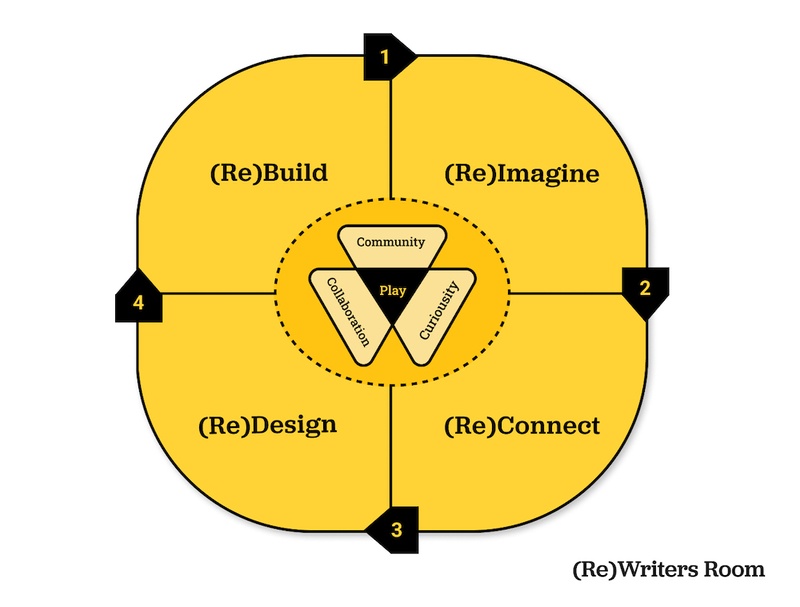
(Re)Writers Room Compass
It sounds like it fights against the systems we’re used to building projects or programs with, because those systems tend to keep certain people in positions of power. Those people hold it tight and don’t change or listen to their larger community, which transforms to distrust.
I think it’s great that you’re speaking to that because there is this thing about moving at the speed of trust. I’m part of a community called the Guild of Future Architects, and that saying is one of the things we talk about. If you don’t move at the speed of trust, you won’t have the emotional investment needed from real stakeholders involved, which are usually the communities who can support a wide spectrum of offerings in your organization’s or project’s future.
For example, people who work in comics are some of the most hard working people I’ve ever met when I was writing Batman and the Signal. They’re incredibly undervalued, overworked, and hardly receive the acknowledgement or financial compensation they deserve. They are perpetually extracted from. And so that premise alone leads to a lot of distrust.
When you’re depleted and deprived, there’s a tendency to either lash out at others or develop a blind spot for opportunities that will give you the tools you’ll need for self-empowerment and self-sustainability—and could change your career trajectory.
I’m curious if you had projects or thoughts in the past when competition was actually the name of the game instead of collaboration.
Well, that’s where healthy competition enters the fray. I think about Matisse and Picasso here. In the book Matisse and Picasso: The Story of Their Rivalry and Friendship, someone had insinuated that when Matisse passed away, Picasso would somehow become the greatest artist alive. But Picasso was quoted saying he was saddened by Matisse’s death. He lost someone who understood his perspective, view, and journey—someone who spoke his language—and there’s no joy in that.
To me, that’s healthy competition: an inherent call-and-response between artists in which one artist’s output inspires the other’s output, which catalyzes a new output from the first artist, and so on. Who are those catalysts that move you toward personal excellence? That relationship is necessary for everyone involved to level up.
It sounds like healthy competition is rooted in respect for different people. It’s against the “rise and grind” culture, which implies someone will beat you if you don’t work harder than everyone else. Healthy competition sounds less like a win-lose and more of a win-win.
It’s feedback. Feedback is the seed for something profound to grow, even if feedback looks like art that we may not like or may not agree with. I’m inspired by those things where I’m like, “Ugh,” because I had an adverse reaction to it. It’s a call to action to build something more beautiful or resonates with me.
People can fall into pockets of toxicity when they don’t offer an alternative. What’s underneath toxicity is a desire to either create or participate when someone feels left out, but that person doubles down on their critique instead of seeing it as an opportunity to build something better. I mean, healthy competition is just a more expansive definition of “cooperation” that could, in the near future, incorporate slow-growth and self-care practices. We are racing against ourselves and others to our detriment—when it’s actually time to decelerate and deepen.
What about people who collaborate using DAOs, or decentralized autonomous organizations?
I think we’re in a moment of intense experimentation and unparalleled opportunity for participation. Blockchains and DAOs represent an opportunity to build new international communities, tools, and consensus that may not exist offline in the same way. That being said, they aren’t the holy grail when it comes to building online communities or empowering creators. There are serious climate and security issues, and because most DAOs aren’t grounded in reality, they have real world limitations. Relying on just these will only lead to more chaos, disillusionment, and resentment. So it’s a balancing act of skepticism and optimism for me.
We need to reinforce what works in pre-existing IRL cooperatives, collaborative structures, and networks and experiment slowly with online frameworks. Perhaps carbon negative blockchains will find even more ways to reduce its environmental impact in the meantime. So while I pay close attention to how some are using tech and tokens for a gold rush or a grift, I’m also realizing that their true value is in the conversations, explorations, and the opportunities for participatory design which may be more important than the tech itself.
Personally, I’m waiting for more artists to create a proportional response to DAOs and NFTs. Some of the most intriguing work (in my opinion) is happening in Western Europe as we speak. To build a DAO from an artist-led perspective which combines the learnings of pre-existing cooperatives is a necessary and inevitable trajectory. I think we’re going to see a proliferation of that kind of hybrid model soon enough. I think we’re going to see a proliferation of it. It could give an economic opportunity to the disenfranchised, the voiceless, the siloed, and the marginalized. I’m hoping to see artists rise to that challenge because I argued with people in 2020 that artists are essential workers. There are some people who don’t believe it, but we’ve seen it in action. Artists are usually the arbiters of change, the first wave of forecasters and forward thinkers. They are the alchemists that transmute the intangible into powerfully-articulated expressions which people can absorb and comprehend in a matter of seconds.
So if we talk about the placemakers and waymakers, the artists are sometimes the first line on that front line of transformation. But anything digital, as far as I’m concerned, should help reinforce some of the beauty that happens in real life. I mean, that’s the missing opportunity. It’s not about just inhabiting a digital or virtual world. It can be an engine to improve things.
Tony Patrick Recommends:
5 Recommendations (things to read, see, do)
Stephanie Dinkins, Secret Garden
adrienne maree brown, Emergent Strategies
Monika Bielskyte, “Protopia Futures”
Peter Block, Community
Christian Linke and Alex Yee, Arcane
- Name
- Tony Patrick
- Vocation
- world builder, immersive director, founder of the (Re)Writers Room
Some Things
Pagination
